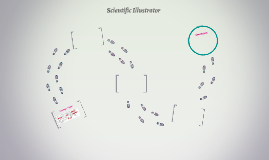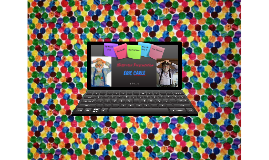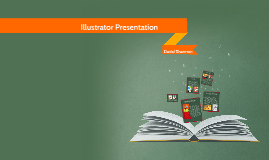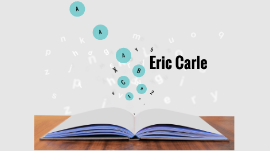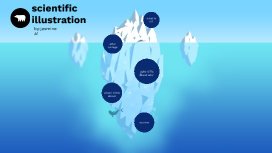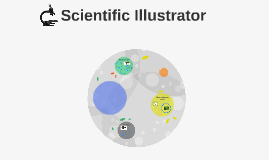Illustrator Presentation
Transcript: All About Him His Books Illustrations How He Does It The Museum 1977, The Grouchy Ladybug 1978, Watch Out! A Giant! 1978, Seven Stories by Hans Christian Andersen (sequel to Seven Tales by the Brothers Grimm) 1980, Twelve Tales from Aesop 1981, The Honeybee and the Robber 1982, Otter Nonsense (illustrator) 1982, Catch the Ball! 1982, What's for Lunch 1983, Chip Has Many Brothers (illustrator) 1984, The Very Busy Spider 1985, The Foolish Tortoise (illustrator) 1985, The Greedy Python (illustrator, companion to The Foolish Tortoise) 1985, The Mountain that Loved a Bird (illustrator) 1986, All Around Us 1986, Papa, Please Get the Moon for Me 1986, Group of small-format books: My Very First Book of Sounds My Very First Book of Food My Very First Book of Tools My Very First Book of Touch My Very First Book of Motion My Very First Book of Growth My Very First Book of Homes My Very First Book of Heads 1986, All in a Day (Mitsumasa Anno editor) 1987, A House for Hermit Crab 1988, The Lamb and the Butterfly (illustrator) 1988, Eric Carle’s Treasury of- Classic Stories for Children 1989, Animals Animals (illustrator) "Ever since I was very young, as far back as I can remember, I have loved making pictures." Born in Syracuse, New York. Graduated from the Akademie der bildenden Künste, in Stuttgart more than 70 picture books started in the late 1960's His best known book is The Very Hungry Caterpillar. "Eric Carle has illustrated pictures with attractive colours in a beautiful manner. Children get to know the life cycle of a butterfly as well as numbers along with names of the fruits that the caterpillar eats. Children can also learn the days of the week and different variety of foods which are presented with colourful shapes." http://www.eric-carle.com/q-makepic.html Eric Carle http://www.eric-carle.com/slideshow_collage.html "The mission of The Eric Carle Museum of Picture Book Art, a non-profit organization in Amherst, MA, is to inspire a love of art and reading through picture books." Slideshow The way he describes it. 1967, Brown Bear, Brown Bear, What Do You See? (illustrator) 1968, 1, 2, 3 to the Zoo 1969, The Very Hungry Caterpillar 1970, Pancakes, Pancakes! 1970, The Tiny Seed 1970, Tales of the Nincompoop (illustrator) 1970, The Boastful Fisherman (illustrator) 1971, Feathered Ones and Furry (illustrator) 1971, The Scarecrow Clock (illustrator) 1971, Do You Want to Be My Friend? 1972, Rooster’s Off to See the World 1972, The Very Long Tail 1972, The Secret Birthday Message 1972, Walter the Baker 1973, Do Bears Have Mothers Too? (illustrator) 1973, Have You Seen My Cat? 1973, I See a Song, 1973 1974, Split-page book collection: My Very First Book of Numbers My Very First Book of Colors:) ((very happy guy)) My Very First Book of Shapes My Very First Book of Words 1974, Why Noah Chose the Dove (illustrator) 1974, All About Arthur 1975, The Hole in the Dike (illustrator) 1975, The Mixed-Up Chameleon 1976, Eric Carle’s Storybook, Seven Tales by the Brothers Grimm 1977, The Grouchy Ladybug 1978, Watch Out! A Giant!1975, The Mixed-Up Chameleon 1976, Eric Carle’s Storybook, Seven Tales by the Brothers Grimm Illustrator Presentation Founded with his wife Barbara Located in Amherst, MA Can take classes, have Storytime, shop for items, go on special events, and more. 1990, The Very Quiet Cricket 1991, Polar Bear, Polar Bear, What Do You Hear? (illustrator) 1991, Dragons Dragons (illustrator) 1992, Draw Me a Star 1993, Today Is Monday 1994, My Apron 1995, The Very Lonely Firefly 1996, Little Cloud 1997, From Head to Toe 1997, Flora and Tiger: 19 very short stories from my life 1998, Hello, Red Fox 1998, You Can Make a Collage: A Very Simple How-to Book 1999, The Very Clumsy Click Beetle 2000, Does A Kangaroo Have A Mother, Too? 2000, Dream Snow 2002, “Slowly, Slowly, Slowly,” said the Sloth 2003, Where Are You Going? To See My Friend! (with Kazuo Iwamura) 2003, Panda Bear, Panda Bear, What Do You See? (illustrator) 2004, Mister Seahorse 2005, 10 Little Rubber Ducks 2006, My Very First Book of Numbers 2007, Baby Bear, Baby Bear, What Do You See? (illustrator) 2008, The Rabbit and the Turtle 2009, Google logo design (illustrator) 2009, The Very Hungry Caterpillar, Pop-Up Edition (40th Anniversary Tribute Book) 2011, The Artist Who Painted A Blue Horse 2013, Friends 2014, What's Your Favorite Animal? 2015, The Nonsense Show By: Allyson Clarke






